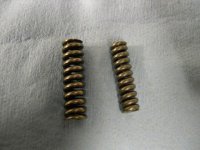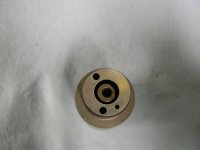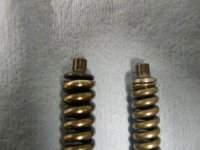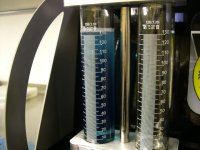Soup Nazi
The artist formerly known as Don M
Resetting pop pressure to a lower value will help with a conversion injector, but it wont fix the inherent issues with spring rates and opening effort needed to keep the injector open when using a P7100 or similar mechanical pump with an injector designed for a VP44.
The issue becomes clear when one looks at the two springs side by side. This hit me like a ton of bricks back in 2004 and the rest as they say is history.
Of course the heavier and longer spring of the 24 valve VP44 injector is on the left and a standard 12V spring for the P7100 is on the right.
The issue becomes clear when one looks at the two springs side by side. This hit me like a ton of bricks back in 2004 and the rest as they say is history.
Of course the heavier and longer spring of the 24 valve VP44 injector is on the left and a standard 12V spring for the P7100 is on the right.








